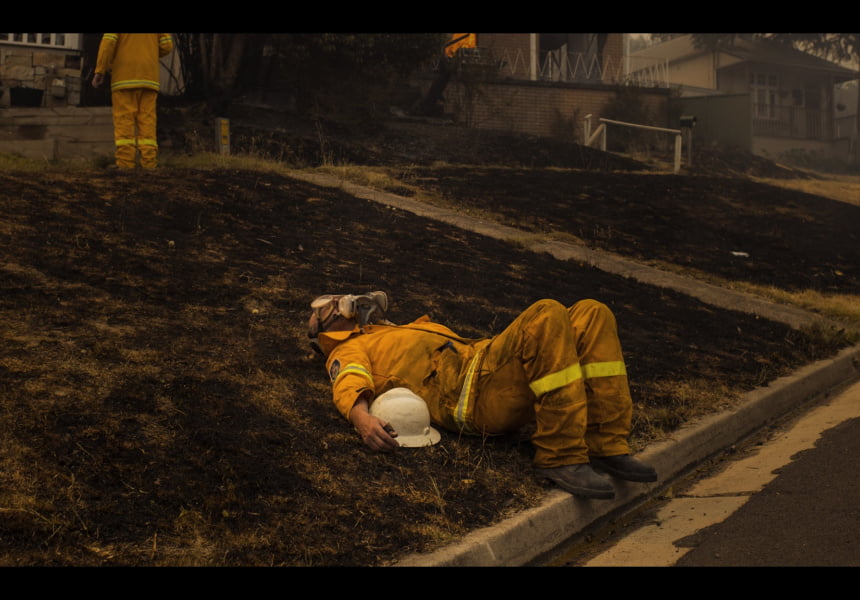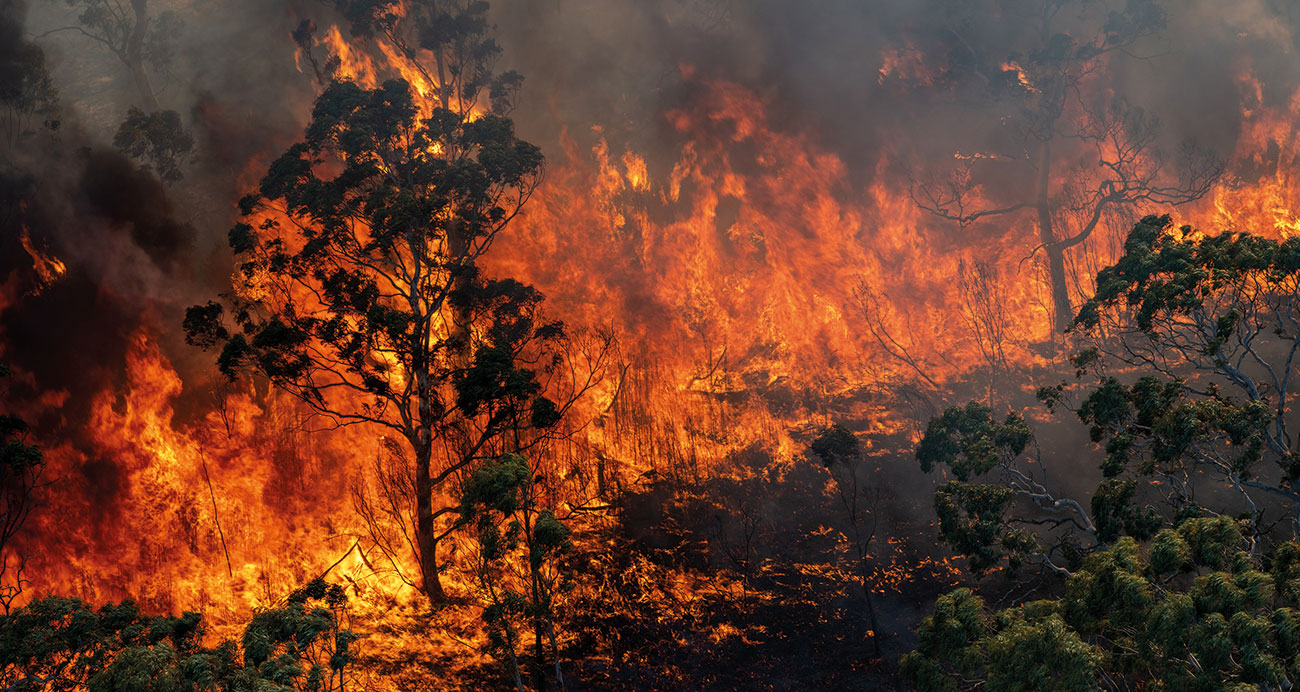History of bushfires in the Australian continent is as old as the times of its origin. The equatorial position and the governing climatic conditions are said to be centrally responsible for this. This resulted in seasonal occurrences of forest fires that are now; rightly called the “Australian season of fire”. But in the many statistical studies, over the last 200 years there has been a trending rate of increase in fires which is still under deep study. Though for the past ten years the fires had been devastating, the 2019-2020 bushfires led to the death of thirty-three people and over three billion animals. It exhibited an uncontrollable nature and required firefighters from across the world like Canada, U.S., France and England.
Even when Australia has given birth to a number of TV series, films, documentaries and other programs centering on the bushfire, it is negligibly so small. The quality of the content is also not up to the mark for such a country experiencing such bushfire disasters for too long. Most of the media productions do not even directly address the issue, but they seem to feed on the commercial value of exhibiting the emotions from the disaster.
The dreaded side of 2019-2020 wildfires reached the people through many media but the role of the visual media, especially television shows and documentaries became more important. The capacity of such visual programs to capture the attention of the people through intensive study over a sufficient time makes it an awareness raising program with the appropriate facts. Immediately after the fires, many Australian documentaries were released, but here, the central question is whether it captured the heart of the issue? A few of the most watched documentaries included Living through Australia’s Black Summer: Fire Country (2020) and Australia on Fire (2020), both of which exclusively dealt with the catastrophes of the wildfire from the ego-centric perspective concentrating only on the human loss involved in the former house and property. It completely fails to address the loss of both human lives and also the loss of much more important flora and fauna of the continent, without which human existence is impossible. They regarded the dead animals and birds as a regular phenomenon that is no more important than the problems of the climate refugees.
When these documentaries traded on the emotions of the affected, Inside the Wildfire (2020) maintained focus on the action of the firefighters and researchers involved to tackle the issue. This projected the image of Australia as a fully equipped country to handle its ever-increasing dread of wildfires. But it also failed to document why the 2019-2020 fires went out of hand, its causes and effect on the plant and animal species. In this scenario of absence, only the television show Wild Australia after the Fires (2020) premiered on ABC had satisfactorily manifested the intensity of the fires. It showed how the fauna, its food and shelter were destroyed, the different voluntary activities undertaken by the conservationist and community to help the animals to adapt to the new changes and raised concern over the survival of endangered species.

Though all of these documentaries and programs documented the wildfire, it could not capture the essence of such a calamity or how the indigenous people are impacted. They also left the ‘cause’ of the unfortunate event unanswered, often ambiguous and at times, pointing towards nature as the villain. Such a gap in communication cannot be neglected on the topic of the fires as an ordinary failed-to-notice event because the origin of such productions is from the heart of the land itself.
The official channels confirm the cause of the fire is the new increasing range of temperature and long months of drought combined with the Indian Ocean Dipole heat wave phenomenon (a condition of sea surface temperature becoming warmer in the western ocean and the east sea becoming cooler). The places worst affected were New South Wales, and Victoria that led the ACT (Australian Capital Territory) to declare a state of emergency.
Also read: Natural Disasters And Their Gendered Impacts
Even in the midst of such events there are no official reports on the loss of species of animals and plants with authoritative documentation, or on the mitigation strategies adopted to meet the situation. Kangaroo Island is one of the many important wildlife sanctuaries of Australia famous for its diversity. After the fires, half of this island that was resided by varieties of koalas, kangaroos, Ligurian bees, brown bandicoots and pygmy possums was scorched.

From an eagle’s eye view, the Australian bushfires cannot be ignored as a climatic phenomenon, it has several dimensions to it, including the historical, legal, social, economic, and ecological. On January 26, 1788 when the British fleet landed in Sydney harbour till present time, the rate of the diminishing Aboriginal population (the death rate of indigenous people in Western Australia was 2.1 times higher than non-indigenous people between 2015-17 according to Nylan Burton and the restrictive laws on their land use patterns have a significant mirroring on the present condition of the country. The various provisions in the constitution and the laws made are not inclusive by nature. They tend to disregard the Aboriginals and their command over their own land. Only a society without any inequality can effectively fight against the environmental hazards together.
They often seem to have forgotten the fact that Australia is an ecologically diverse nation. Very few of them, take up the issue of nature silently abating in the human made embers. Such acts from a country full of conservationists and biologists apparently showcase these silences as deliberate. It is most shocking to find out that none of these major media productions includes the Aboriginals, their ways of land and forest management or how they are economically and emotionally battered by the fires.
The social space involved in Australia hardly reflects this phenomenon and thus, the common inaction against the disaster as a whole. Although, there are attempts by different organizations and otherwise, for a common action, they all seem to be disconnected in nature and only gives the impression of crying in the wilderness. Australia being a multicultural nation should seek ways to include its vast variety of people with differences of race, gender or origin to understand the need for a common panacea. It can drive the people towards a common goal of protecting nature and to work towards it.
The role of the government is surely the heart and soul of the issue that cannot be neglected. The nature of the current government in Australia is quite clear from the documentary, Living through Australia’s Black Summer (2020), it shows how people trust and approach the community relief centers rather than the government evacuation systems in Cobargo, New South Wales. Increasing eco-awareness and learning to live closer to nature empathetically, not only increases mutualism but inclusiveness. One of the most effective and long-lasting steps by which these can be induced is solely through education. It can be done by both, bringing about changes in the curriculum at school and university level, and also by initiating adult education programs. Adult education programs should invariably aim at understanding the ecological phenomenon and the nature of bushfire behaviours in varied situations.
Also read: California Wildfires: How Heatwaves Are A Human Rights Concern As Well
These attempts can build up confidence in the citizens to respond appropriately to these situations. Also, it can help them to identify the fire-resistant materials for domestic purposes thereby reducing the aftermath of bushfire disasters and it can also provide a form of income by entrepreneuring with such products. Proper ecological education can help to develop the understanding about the correlation between forest fires and eucalyptus trees that forms a major among the plant species in Australia. Eucalyptus forests are spread across the different parts of the country which is said to complicate the issue further.
The role of visual media in discussing and delivering the issue factually to the layman is a main strategy of adult education in particular. Even when Australia has given birth to a number of TV series, films, documentaries and other programs centering on the bushfire, it is negligibly so small. The quality of the content is also not up to the mark for such a country experiencing such bushfire disasters for too long. Most of the media productions do not even directly address the issue, but they seem to feed on the commercial value of exhibiting the emotions from the disaster. These productions directly and ultimately focus only on the human part of the narrative as the victim, hence erasing the presence of nature not only from their production but also from the mind of the viewers. It projects the impact of bushfire on nature and its animal world as an inevitable on-going episode of nature’s wrath. It can be simply described as a drama without a hero, but one with nature as the villain.
Therefore, it fails to answer the why and how part of the whole issue under consideration. They often seem to have forgotten the fact that Australia is an ecologically diverse nation. Very few of them, take up the issue of nature silently abating in the human made embers. Such acts from a country full of conservationists and biologists apparently showcase these silences as deliberate. It is most shocking to find out that none of these major media productions includes the Aboriginals, their ways of land and forest management or how they are economically and emotionally battered by the fires.
Of the selected documentaries for this study, none of it ever mentions or shows them, it seems they are deliberately absent from the scene. It is very unsettling to draw out that when they seem to be invisible in those visual media, where they can be in their social life. The Aboriginals seek to oppose such cultural erasure by calling to replace the national day or Australia day celebrated every January 26 as Invasion Day. Similar treatment is also shared by the other racial groups in Australia like Africans, Indians, etc. who for long have been in Australia. Thus, multicultural Australia forgets to hear the voices of its original and diasporic communities.
About the author(s)
Vidhu (she/her) is an emerging writer with Masters in English language and literature, keen on learning the politics of the world around her. She has dreams to create a career in journalism and writing, where she unburdens her self. She has a great taste for movies from varies geographical spans and pens down poetry in magical charms. She is open to projects or research centring on humanities.





